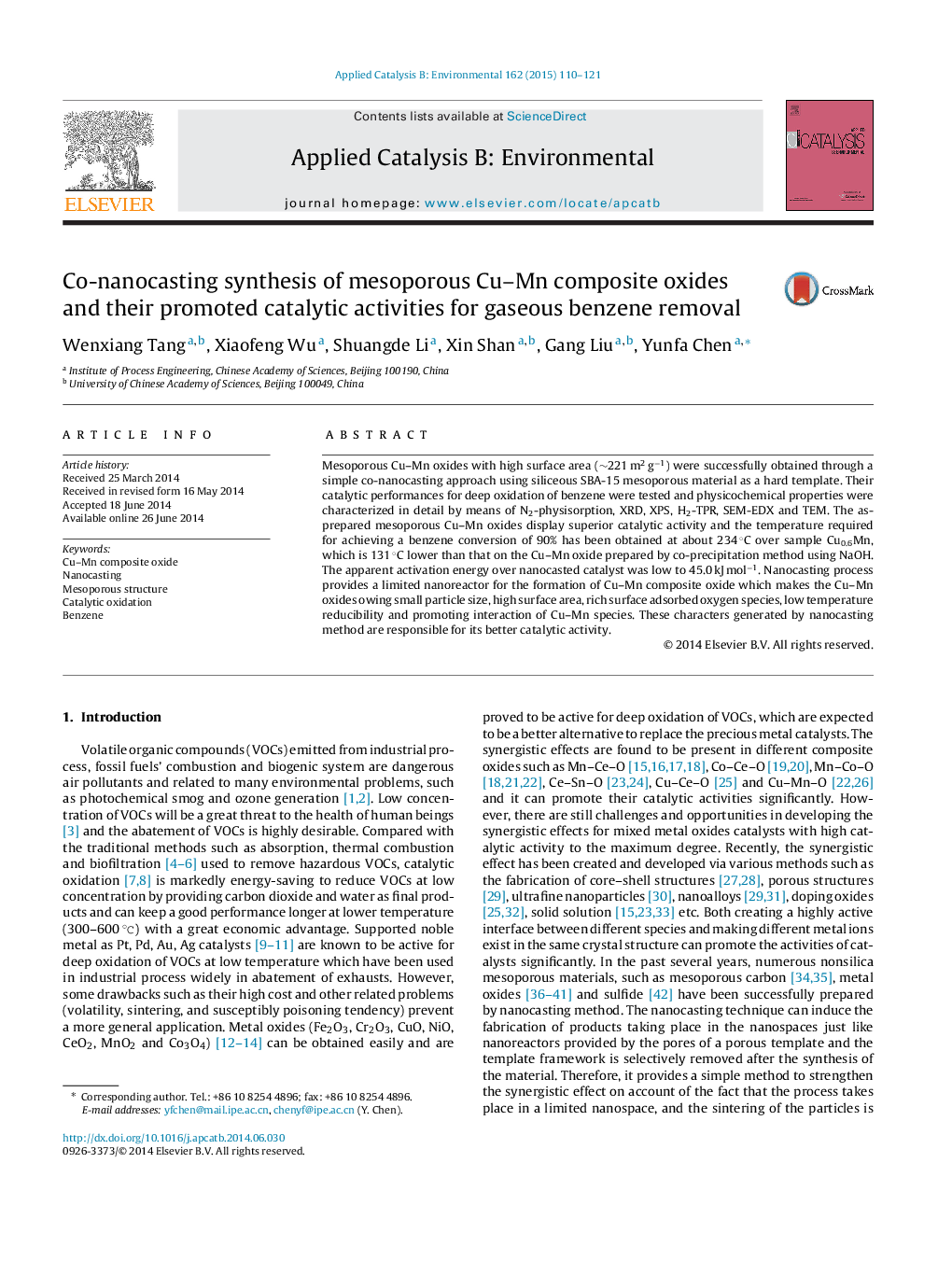| Article ID | Journal | Published Year | Pages | File Type |
|---|---|---|---|---|
| 45627 | Applied Catalysis B: Environmental | 2015 | 12 Pages |
•Co-nanocasting approach was applied to prepare mesoporous Cu–Mn composite oxide with a high surface area.•The sample Cu0.6Mn exhibited the highest activity for catalytic oxidation of benzene and the Ea was low to 45.0 kJ mol−1.•The nanocasted Cu–Mn oxides displayed better activity than that of other catalysts prepared by traditional methods.•Nanocasted catalyst possesses rich adsorbed oxygen species, low temperature reducibility and promoting interaction.
Mesoporous Cu–Mn oxides with high surface area (∼221 m2 g−1) were successfully obtained through a simple co-nanocasting approach using siliceous SBA-15 mesoporous material as a hard template. Their catalytic performances for deep oxidation of benzene were tested and physicochemical properties were characterized in detail by means of N2-physisorption, XRD, XPS, H2-TPR, SEM-EDX and TEM. The as-prepared mesoporous Cu–Mn oxides display superior catalytic activity and the temperature required for achieving a benzene conversion of 90% has been obtained at about 234 °C over sample Cu0.6Mn, which is 131 °C lower than that on the Cu–Mn oxide prepared by co-precipitation method using NaOH. The apparent activation energy over nanocasted catalyst was low to 45.0 kJ mol−1. Nanocasting process provides a limited nanoreactor for the formation of Cu–Mn composite oxide which makes the Cu–Mn oxides owing small particle size, high surface area, rich surface adsorbed oxygen species, low temperature reducibility and promoting interaction of Cu–Mn species. These characters generated by nanocasting method are responsible for its better catalytic activity.
Graphical abstractFigure optionsDownload full-size imageDownload as PowerPoint slide
